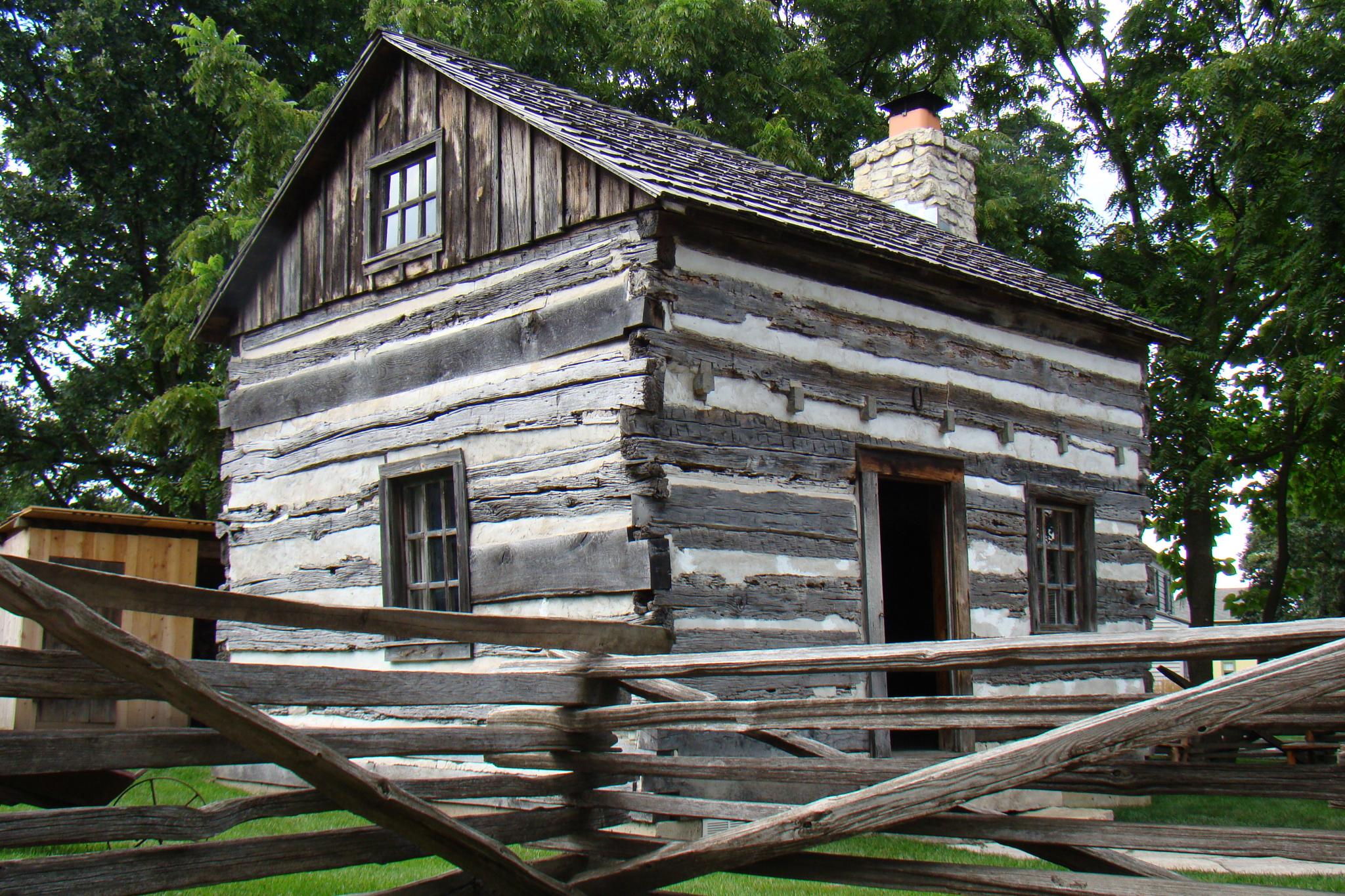
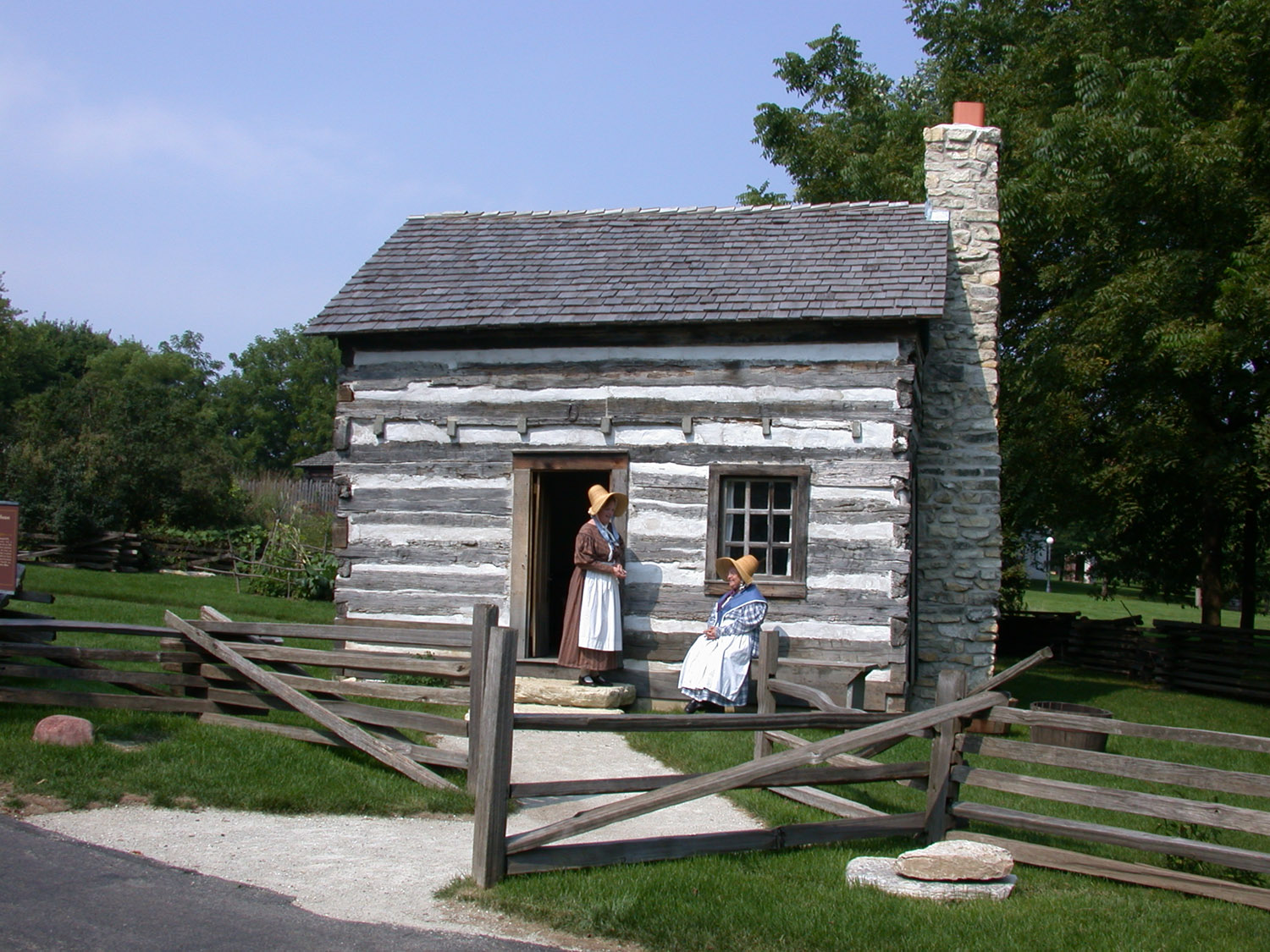
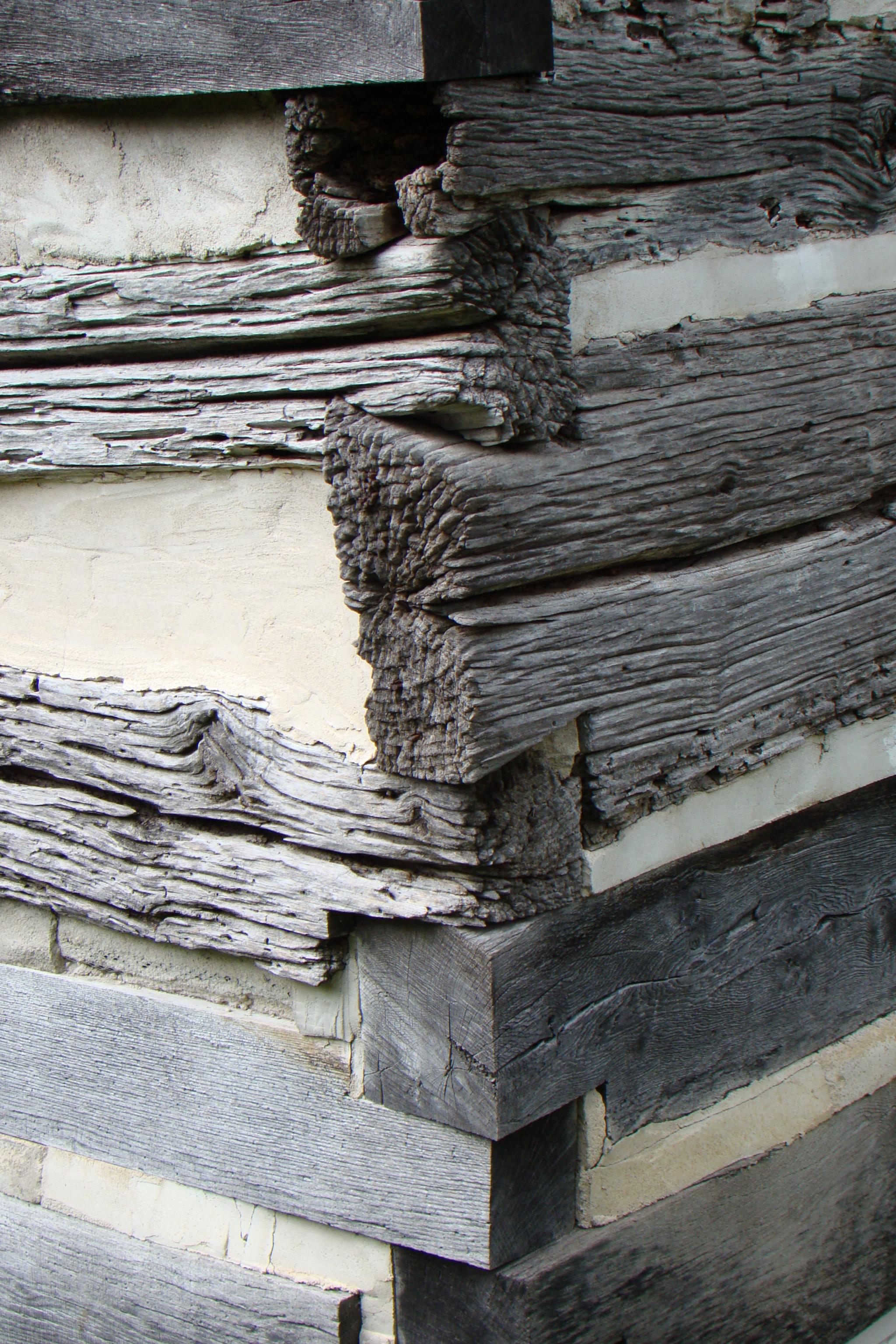
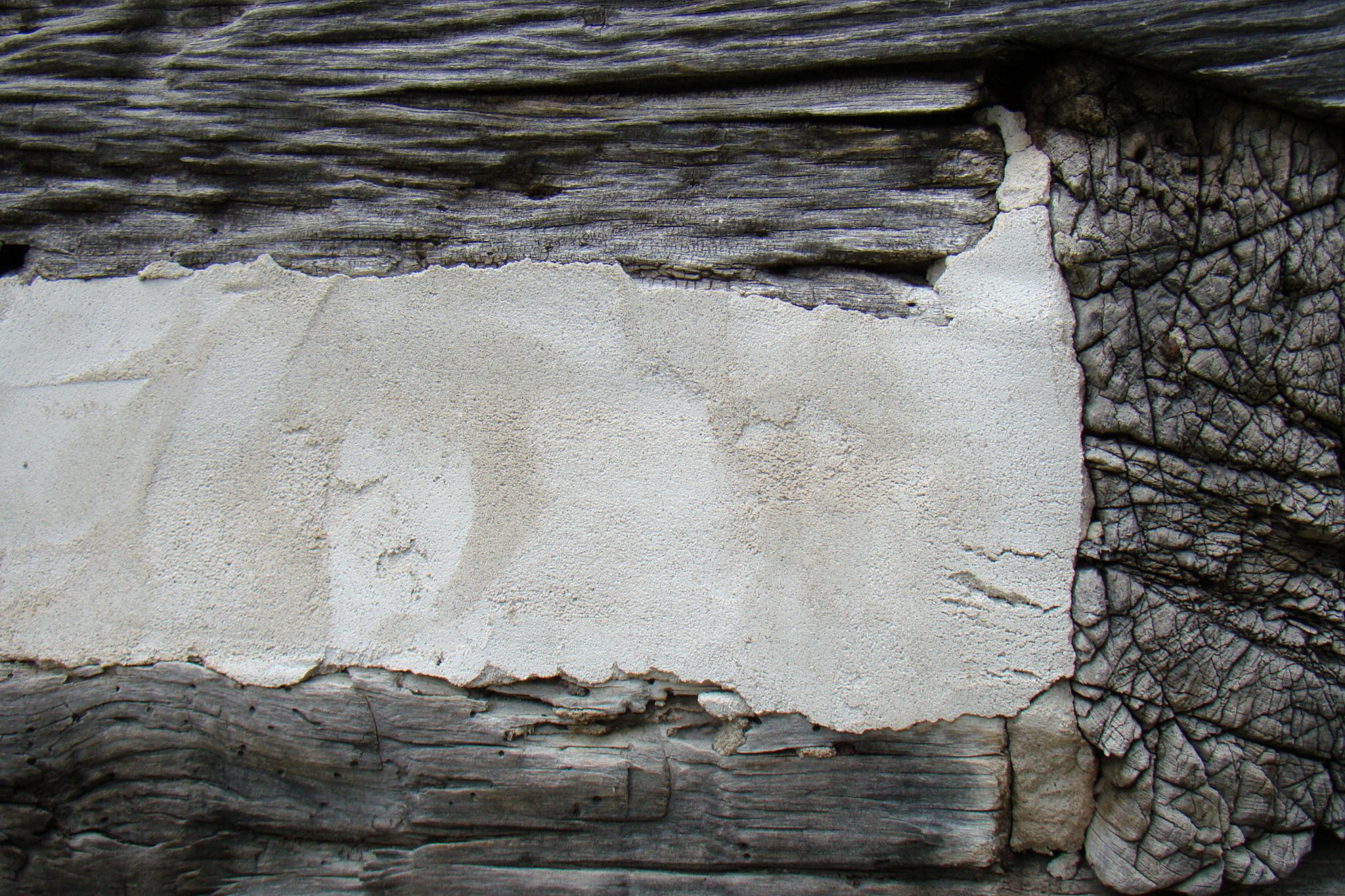
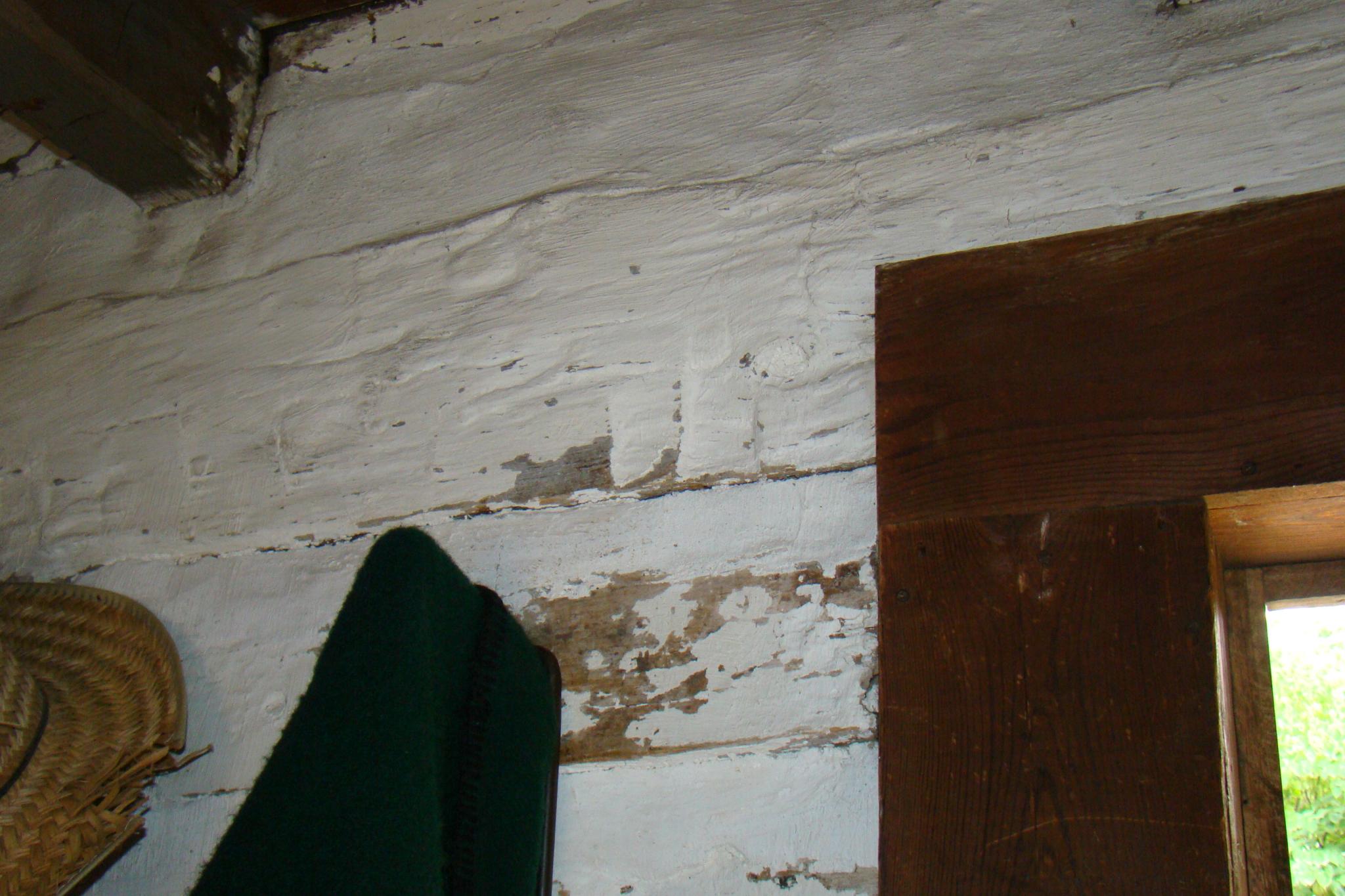
Log homes were settlers’ first residences when they arrived at their destination on the wooded prairies. Swedish and Finnish colonists who settled the Delaware Valley in Pennsylvania brought the style to America in the 1630s. Log homes could be built of logs that were either hewn, cut and shaped, or unhewn, left whole. After cutting, builders made notches at the ends of the logs. Notches held logs in place and eliminated the need for nails or pegs. Builders filled the gaps between logs with clay or mud. This process, known as chinking, weatherproofed the exterior walls. As a finishing touch, the walls inside the home were “whitewashed” using a mixture of crushed limestone and water. This helped to brighten the room and made it easier to clean soot and dirt off the walls. The finished product was a log home any early settler could be proud of. Log homes were never intended to be permanent structures. Settlers would live in the simple log home for only a few years until they built a larger frame house like those they lived in back East.